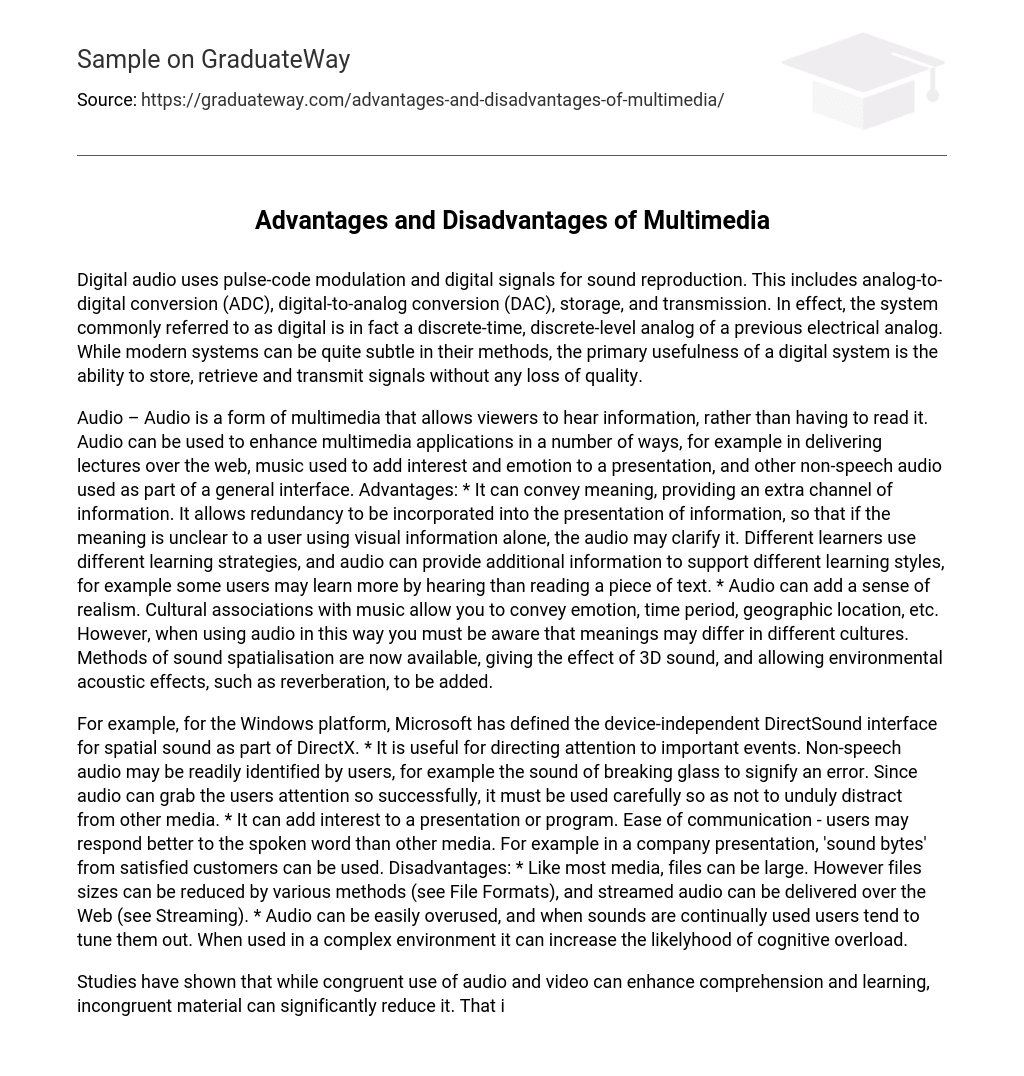Digital audio uses pulse-code modulation and digital signals for sound reproduction. This includes analog-to-digital conversion (ADC), digital-to-analog conversion (DAC), storage, and transmission. In effect, the system commonly referred to as digital is in fact a discrete-time, discrete-level analog of a previous electrical analog. While modern systems can be quite subtle in their methods, the primary usefulness of a digital system is the ability to store, retrieve and transmit signals without any loss of quality.
Audio – Audio is a form of multimedia that allows viewers to hear information, rather than having to read it. Audio can be used to enhance multimedia applications in a number of ways, for example in delivering lectures over the web, music used to add interest and emotion to a presentation, and other non-speech audio used as part of a general interface. Advantages: * It can convey meaning, providing an extra channel of information. It allows redundancy to be incorporated into the presentation of information, so that if the meaning is unclear to a user using visual information alone, the audio may clarify it. Different learners use different learning strategies, and audio can provide additional information to support different learning styles, for example some users may learn more by hearing than reading a piece of text. * Audio can add a sense of realism. Cultural associations with music allow you to convey emotion, time period, geographic location, etc. However, when using audio in this way you must be aware that meanings may differ in different cultures. Methods of sound spatialisation are now available, giving the effect of 3D sound, and allowing environmental acoustic effects, such as reverberation, to be added.
For example, for the Windows platform, Microsoft has defined the device-independent DirectSound interface for spatial sound as part of DirectX. * It is useful for directing attention to important events. Non-speech audio may be readily identified by users, for example the sound of breaking glass to signify an error. Since audio can grab the users attention so successfully, it must be used carefully so as not to unduly distract from other media. * It can add interest to a presentation or program. Ease of communication – users may respond better to the spoken word than other media. For example in a company presentation, ‘sound bytes’ from satisfied customers can be used. Disadvantages: * Like most media, files can be large. However files sizes can be reduced by various methods (see File Formats), and streamed audio can be delivered over the Web (see Streaming). * Audio can be easily overused, and when sounds are continually used users tend to tune them out. When used in a complex environment it can increase the likelyhood of cognitive overload.
Studies have shown that while congruent use of audio and video can enhance comprehension and learning, incongruent material can significantly reduce it. That is, where multiple media are used they should be highly related to each other to be most effective. * For most people, audio is not as memorable as visual media. * Good quality audio can be difficult to produce, and like other media most commercial audio, particularly music, is copyright. * Users must have appropriate hardware and software. In an open plan environment this must include headphones.





